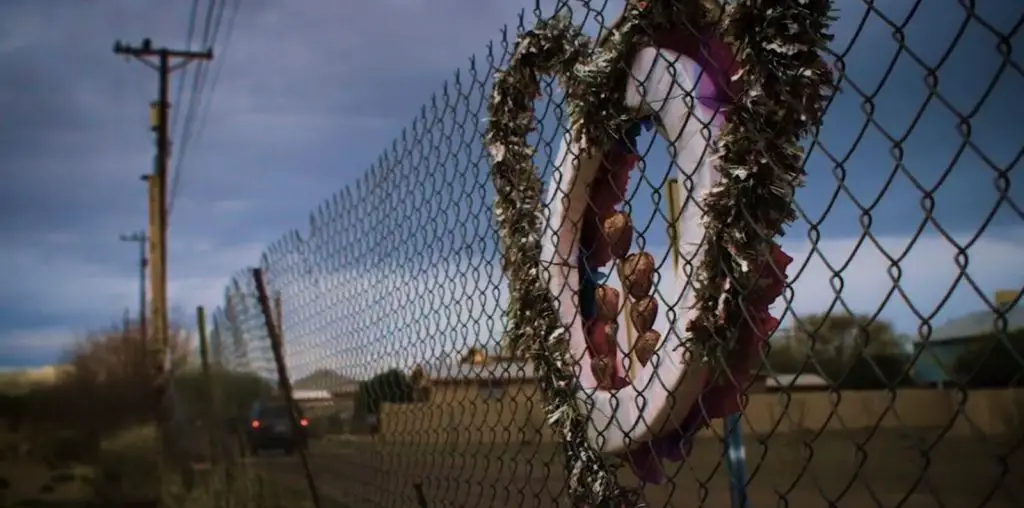
The struggle to tear down racial barriers within the world of classical opera is the subject of the intriguing yet curiously jumbled documentary “Aida’s Brothers & Sisters: Black Voices in Opera.” While the film is home to some soaring beautiful music, the focus of this production is frequently confused and some fairly obvious omissions within this story stand out like proverbial sore thumbs.
“Aida’s Brothers & Sisters: Black Voices in Opera” opens with one of the greatest voices of the 20th century: Marian Anderson, who brought a peerless grace to the stage which few have ever eclipsed. A clip of her performance of “Ave Maria” opens this film and, quite frankly, nothing which follows here can touch its incandescent brilliance. This film offers newsreel footage from her landmark 1939 concert at the Lincoln Memorial, which was held after the Daughters of the American Revolution denied her access to their Constitution Hall venue, and there is also a brief citation that Marian Anderson did not perform with New York’s Metropolitan Opera until 1956 (fairly late in her career and, truth be told, when she was past her vocal peak). Yet the circumstances which both kept her from the Met stage for too many years and the events which eventually broke down the segregation bar to enable her performance are curiously never covered in this film.
Indeed, “Aida’s Brothers & Sisters: Black Voices in Opera” is both a blessing and a cheat. The film is rich with magnificent film and video records of towering performances by the likes of Leontyne Price, Jessye Norman, Simon Estes, Grace Bumbry and Reri Grist. However, the history of black talent on the opera stage is tossed in a choppy, piecemeal fashion which drops down in no discernible manner. As a presentation of great talent and wise insight from this special artistic sphere, the film is a gem. But as a documentary presenting the evolution of a specific artistic happening, the film is a mess.
First and foremost, “Aida’s Brothers & Sisters: Black Voices in Opera” makes the unusual choice of framing most of its interviews in an asymmetrical split screen which places its subjects on four-fifths of the screen while the remaining one-fifth is devoted to endless and aimless tracking shots of the streets of Atlanta. Don’t ask why, because it’s never explained and no one being interviewed even mentions Atlanta by name.
Then there is a segment on Negro spirituals, although there is no cogent explanation on the connection between this form of music and primarily Eurocentric world of opera. The film includes an expected section devoted to the still-lingering controversy regarding “Porgy and Bess” and Anne Brown, the soprano who originated the role of Bess in the 1935 premiere of the opera, is interviewed at great length. Yet while “Porgy and Bess” is the most famous all-black opera, it was hardly the first: selections from Scott Joplin’s 1915 “Treemonisha” and the Virgil Thomson-Gertrude Stein 1934 creation “Four Saints in Three Acts” are briefly featured, but the history of these unique productions are never covered. (Not discussing “Treemonisha” is especially odd since it is, I believe, the first opera written by an African-American composer.)
Later in the film, much screen time is presented in describing the mirror between the gradual integration of opera in the 1950s and 1960s against the rising civil rights movement in the U.S. Yet the villains of opera who kept black performers out are never identified here–after all, just who was responsible for the long exclusion? And nowhere is there any mention of the 1956 controversy in casting Leontyne Price in the NBC broadcast of “The Magic Flute,” which the network bravely put on the air despite atrocious threats of boycott by several local affiliates. How could anyone create a documentary on black opera stars and not include that groundbreaking event?
The film also bemoans the lack of opportunities for black tenors and baritones, but a lengthy segment is inexplicably devoted to bass singer Paul Robeson (who never sang operatic compositions) and only passing mention and no footage or photographs are given for Robert McFerrin, the tenor who was the first African-American to star in a Met production (his son Bobby McFerrin appears briefly). Composer Anthony Davis is interviewed regarding his 1992 opera on the life of Malcolm X, but too much time is devoted into discussing its commercial volatility while just a thin slice of an aria from that work is allowed into the film. And while a great deal of time is spent celebrating the divas of the modern opera, the most controversial African-American diva of this world (the imperial Kathleen Battle) is conspicuously absent from the proceedings.
But in spite of its glaring flaws, “Aida’s Brothers & Sisters: Black Voices in Opera” provides the culture vultures with some wonders to enjoy. The thrill of seeing and hearing Leontyne Price, Grace Bumbry and Jessye Norman is enough to temporarily erase the film’s lingering clumsiness in favor of great artists at the top of their worlds who bring to life a special blend of drama and passion through music which transcends time and geography. Five minutes of Grace Bumbry’s Aida can pardon endless excesses in rickety, bumbling filmmaking which fill the gaps between the arias. (Ms. Bumbry provides wonderful anecdotal commentary on her experiments with stage make-up, running the spectrum from getting the right look as Carmen to the necessary shadings as Lady Macbeth.) There are also samples of arias from 19th century operas written for black leads, including “Otello” and “L’Africaine,” which are thrillingly performed by the members of the Opera Ebony company.
“Aida’s Brothers & Sisters: Black Voices in Opera” is nowhere near perfect and its failings deflate what should have been a soaring history of artistic and social triumph. Opera lovers will find tasty nibbles here and there, but the main feast is undercooked and poorly served.

